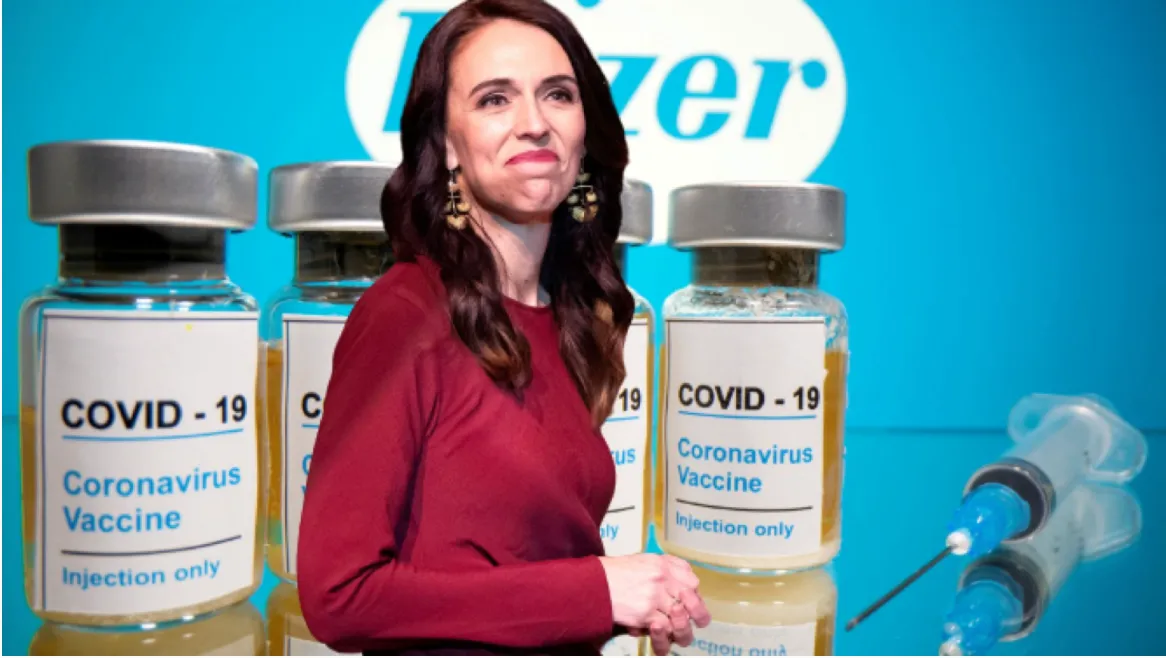Table of Contents
Marc Grey
We are getting 4 COVID vaccines in New Zealand. These vaccines are especially interesting as novel technology has made their development rapid. At the same time, the precise nature of this technology is not as well-publicised as it could be. For instance, there is useful data on the government’s COVID site, but it took several attempts to find, and it is light on detail and heavy on jargon.
Lack of information or unclear information is never a good thing, and this article is an attempt to provide more detailed, and (hopefully) clearly explained descriptions of the various vaccines and some discussion concerning risks and effectiveness.
Vaccine Description
A brief description of each vaccine – based on information from the previously referred to COVID site, but fleshed out to specify the delivery (i.e vector) and activation method (i.e how it triggers the immune response) –follows. It is full of medical jargon, which will be explained below:
Pfizer/BioNTech
- Type: mRNA for ‘Spike protein’
- Delivery: Lipid nanoparticle
- Activation: Spike protein production
- Doses: 2
- Trial Status: Phase 2/3 study published, Phase 3 in progress
Janssen Pharmaceutica
- Type: DNA for ‘Spike protein’
- Delivery: Modified Adenovirus
- Activation: Spike protein production
- Doses: 1
- Trial Status: Phase 3 in progress
Oxford/AstraZenaca
- Type: DNA for ‘Spike protein’
- Delivery: Modified Adenovirus
- Activation: Spike protein production
- Doses: 2
- Trial Status: Phase 3 in progress
Novavax
- Type: Subunit (recombinant partial ‘Spike protein’)
- Activation: Custom adjuvant
- Doses: 2
- Trial Status: Phase 3 in progress
Vaccine Detail Design
All these vaccines use some or all of the distinctive ‘spike protein’ (part of the SARS-CoV-2 virus shell) as the pattern for immune response. These form the distinctive feature that gives this virus family its name (i.e. a ‘corona’ as in ‘crown’).
We cover each vaccine in turn:
All bar the Novavax are a new design – they deliver genetic material (either RNA or DNA) for the ‘spike protein’ into (some of) your cells. Once there the cell’s molecular machinery decodes it and starts producing the ‘spike protein’. This protein gets expressed on the outside of the cell wall which gets your immune system making antibodies of various types to protect you from it.
The Novavax is a modern variant of a more traditional inactivated virus vaccine.
Pfizer/BioNTech
This uses messenger RNA coding for the ‘spike protein’. This mRNA is wrapped in a lipid nanoparticle so it can get into cells. Once there the cell’s molecular machinery decodes it and starts producing the ‘spike protein’. Since it is RNA, it can be used immediately by the cell’s molecular machinery to make the protein (so does not enter the cell nucleus).
In transit and storage this vaccine must be kept extremely cold (-70 Celsius), as mRNA is reactive even at normal refrigeration temperatures.
Janssen Pharmaceutica
The Adenovirus (a virus that causes cold like symptoms) is modified to contain DNA for the ‘spike protein’. The virus itself is attenuated (weakened) additionally (to limit replication). The virus delivers the DNA to cells. Once there it is taken into the cell nucleus and the DNA is transcribed into mRNA. This is used by the cell’s molecular machinery to manufacture the ‘spike protein’ analogously to the mRNA vaccine.
In transit and storage this vaccine only needs normal refrigeration, as DNA is much more stable.
Oxford/AstraZenaca
This uses the same design as the Janssen vaccine.
In transit and storage, this vaccine only needs normal refrigeration (2-7 Celsius).
Novavax
A part of the ‘spike protein’ is produced via a recombinant gene editing + external (cultured insect cell) process. This is combined with a custom adjuvant called ‘Matrix-M‘ (probably a semi-toxic chemical) needed to trigger an immune response.
This vaccine contains no genetic material and can be stored like any other vaccine.
Risks
Normally (or in the past) vaccines are developed and then trialled (Animals, Phase 1 to 3). After that, the vaccine is approved if the trials are successful. This takes several years. However, for COVID, trials have been abbreviated, run in parallel or are still running! For instance, Pfizer appears to have run abbreviated animal trials and all the vaccines are now in Phase 3 trials as indicated above. This state of affairs has led to some suspicion that these vaccines may not be as safe as usual. This is made worse by the use of novel technologies in their design!
Another area of concern is related to previous attempts to make Coronavirus vaccines (SARS and MERS). Animal trials revealed an alarming number of cases where the test subjects died from antigen dependent enhancement (ADE) when they contacted the virus in the wild. This is a phenomenon whereby the immune system produces non-neutralising antibodies after exposure to the vaccine and these enhance the virulence of the wild virus when it is encountered. While this has not been reported for COVID vaccines, the abbreviated (or skipped) animal trials combined with the unfinished human trials mean that this is a risk.
The specialised refrigeration requirements for mRNA vaccines could be problematic for remote distribution. If a patient is administered a temperature degraded vaccine is it merely ineffective or is it dangerous?
Lastly, most of these vaccines require the administration of 2 doses. This imposes an organisational hurdle much higher than the annual ‘flu’ vaccine. What is the likelihood that you get dose 1 of (say) Pfizer and arrive later for dose 2 and they only have (say) Novavax and administer that? Does that mean the vaccine is ineffective or dangerous?
New Technology Concerns
There are specific concerns caused by the novel technology used in these vaccines. In particular, there is the idea that the (mRNA and DNA) ones ‘re-write your DNA’. As mentioned above, the mRNA ones do not. However, the DNA ones certainly do. But the vaccine only affects some of your cells and the takeover to make these cells produce the ‘spike protein’ is likely to kill them, or the immune system will thereafter. While this sounds scary, *any* DNA based virus (e.g. Varicella-Zoster, which causes chickenpox) does exactly this.
Another concern is the likelihood of unknown medium or long term undesirable side effects caused by these new technologies. While this is being addressed by the continued Phase 3 trials – the fact we are being offered the vaccine before they have completed means this is valid concern.
Effectiveness
Initial data from Israel suggests that the first dose of the Pfizer vaccine is less effective than current trials suggest (33% vs 52%). The real interesting data will be when sufficient 2nd doses have been given (Israel is interesting as its vaccine programme is very advanced). So watch this space as information comes in, and for data from the other vaccines.
Finally, as mentioned previously these vaccines use the ‘spike protein’ as a pattern for the immune response. Traditional vaccines tend to use much more of the virus (often all of it). So will just using the ‘spike’ make these new vaccines better or worse at providing protection against mutated variants (i.e strains) of the virus?
Please share this BFD article so others can discover The BFD.









